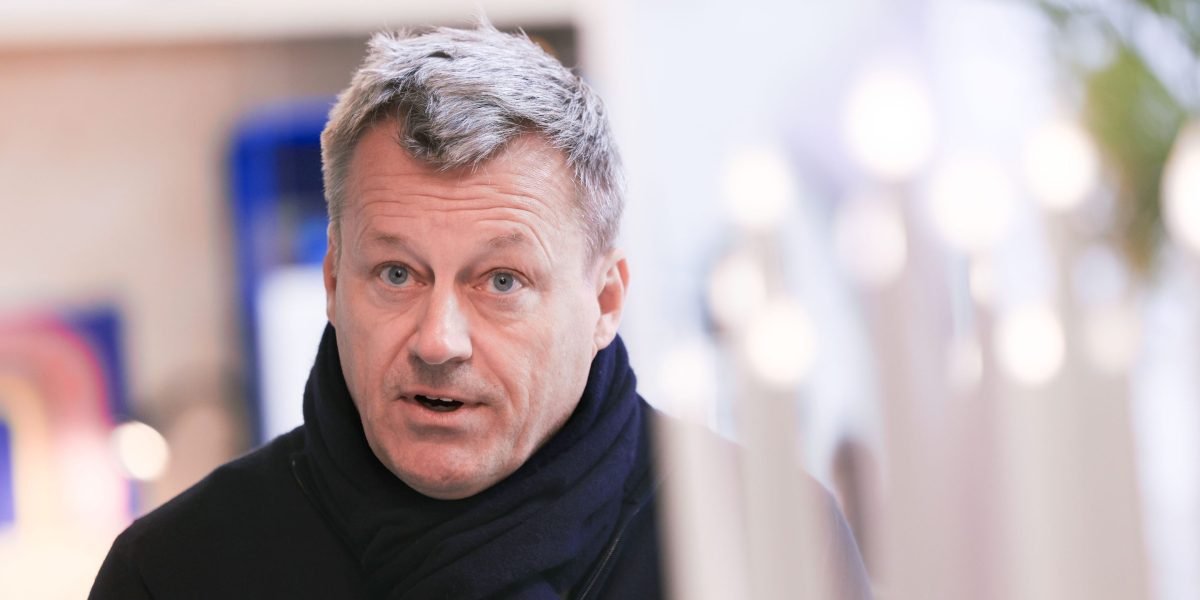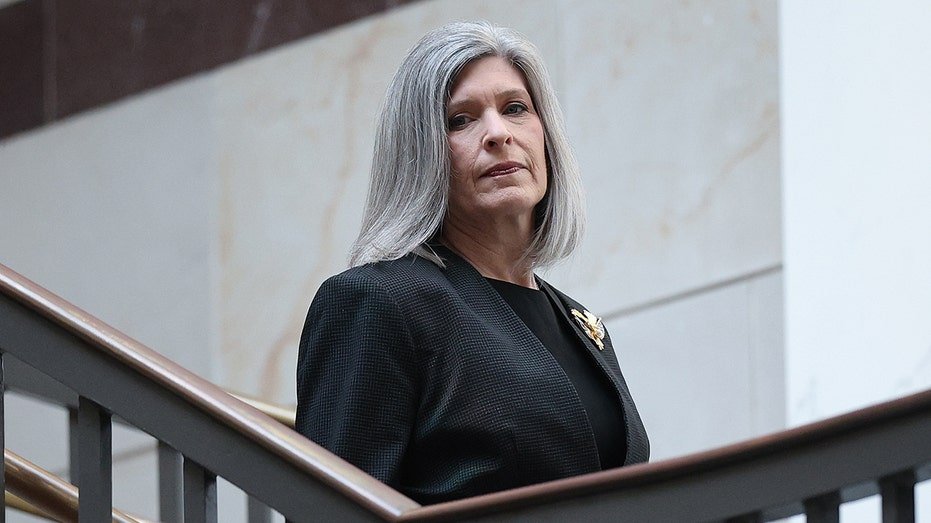
While Europe is heading towards its renewed goal of 1.5 trillion euros, companies like IKEA are looking for green energy opportunities today

The self -assembly furniture in the SCANDI SCANDI SCANDI has made SCANDI to search for homes, hotels and phases throughout Europe. For example, more than 30 million of her chair has been sold everywhere in Popang, and it has been allocated in IKEA)-since its launch in 1977, making it one of the most popular furniture products ever.
But the company has another claim that is less famous for fame. Since 2009, more than 4.2 billion euros ($ 4.9 billion) has invested in renewable energy, which now provides 75 % of the electricity used by the business it does, transmission and retail trade. “Today, it turns out that we are also a medium -sized accompanying company, although we were honest were not part of the strategy”, “Deadpans Jesper BRODIN, CEO of IKEA’s largest franchise, responsible for 90 % of the group’s sales).
It is only half a joke: If their production is sold in the energy market, 49 wind farms and 26 solar parks owned by ingka produce low carbon electricity to meet the needs of 1.47 million families in the European Union.
Certainly invest in carbon investment. Company company2 Emissions – SSCOPE 1,2 and 3 – has decreased by 30 % since the Paris Agreement for the year 2015, while sales have grown by 24 % during the same period. However, what started as a desire to do the right thing for the planet and the brand (68 % of Ikea customers believe that climate change is the most dangerous global challenge, says Broadin) has turned into an unexpected source of competitive advantage.
4.9 billion dollars
IKEA investment in renewable energy since 2009
“When we started investing, we were not sure that it would be smart from an economic point of view. But our energy bills decreased by 27 % (from 2015), so we have provided a lot of money. Over a period of three to five years, renewable energy sources come out by about half of the price (for fossil fuel generated). People believe that renewable energy will come in a financial amount, but in reality, this is the opposite.”
After the Russian invasion of Ukraine caused a two -year rise in wholesale gas prices, a similar change occurred in Brussels. The last plan is the European Union Committee for its carbon economy – the clean industrial deal, which was announced in February – has dropped previous calls to the collective conscience of business leaders to help save the planet, in favor of focusing on the competitive advantages to increase the adoption of renewable power throughout the continent.
The Chairman of the Committee, Ursula von der Layen, said that the deal “will reduce relations that still hinder our companies and put a clear work issue for Europe.”
In addition to repairs to the electricity and gas markets designed to reduce energy costs, the clean industrial deal the goal To mobilize 100 billion euros from the funding of the European Union to support low carbon manufacturing, especially in industries that are difficult to photograph, such as minerals, chemicals, and cement that depend on hydrocarbons for its intensive energy processes. The committee predicts that the policy program will create more than 500,000 new jobs, and great opportunities for European companies looking to sculpt a low -carbon competitive position.
Green Steel Start-UP Stegra is one of these companies. It has collected a total of 6.5 billion euros (including a grant of 250 million euros from the European Union’s innovation fund) to build a BONEN factory in North Sweden, which will use renewable energy by 100 % to produce 5 million tons of “local” green steel at annually by 2030, with a carbon link 95 % smaller than the traditional brown factory.
STEGRA uses the renewable energy to generate hydrogen, which is then used as fuel but as a chemical revelation. Production will start with a lower level in 2026, and despite the 25 % price premium to 30 % on brown steel, it is already proven popular: the company has been sold forward about 1.25 million tons-from the primary production goal-to customers who are eager to enter the ground floor of green steel.
“Our customers are planning forward, and they see that Brown Steel will ultimately be more expensive than green steel as soon as the full cost of carbon is included. They do not buy them for branded or marketing purposes, they are pure economies,” says Stegra.
High costs, large barriers
If the Von Der Leyen vision of safety, green growth should be widely achieved for more companies, Europe needs to increase the transition to renewable energy sources significantly, at the same time that the costs are reduced.
By the end of 2023, Europe (with the exception of Russia) was 786 GB It is the installed renewable power capacity, according to the IRNA. This is an increase of 79 % since 2014, and the pace has continued since, with a record increase 65.6 GB In the European Union alone last year and expected another record this year.
However, it still leaves a long way to reach the ambitious goals of the European Union of 69 % of electricity consumption and 42.5 % of the total energy coming from renewable energy sources by 2030. According to the Repowreu plan in the European Commission for 2022, the Repowreu plan for 2022 to achieve this goal. some Estimates It indicates that this will cost about 1.5 trillion euros.
Then there is a need to update Europe networks, not only to deal with the largest peak loads of these investments, but also to cover the distance between the best sites for renewable generation (solar energy in southern Europe, wind in coastal western Europe) and remote urban centers. To date, invest the network significantly late Investments in renewable energy sources themselves.
“Because of the contrast of winds (solar energy), there is an urgent need for more interconnected connections, and more investment in networks,” says Christophe Zipp, spokesman for Windeurope, a commercial power manufacturer in the European Union. One of these clearing projects is North Sea False NetworkA project worth 20 billion pounds to connect 400 wind turbines in the North Sea, to facilitate the exchange of wind energy between countries on both sides of the water. “When there are such groups, it makes sense to link them to more than one country – the United Kingdom, Denmark and Belgium, for example,” says Zipf.
But where will the money come from? Francecso Starace, the EQT partner, says the third largest investor for private stocks in the world, who has invested 17 billion euros in Europe over the past fifteen years, given the appropriate organizational environment, there is capital ready to move. There is already an appetite for investing in network and distribution networks. Networks need a restructuring of the modern world, not for the world 50 years ago when they were built.
“The organizers have a major role in playing, but they need to understand that more money should invest in networks. Network operators need an organization that stimulates investment instead of inhibiting them from doing this, which was the case for many years,” says Starras, former CEO of ENEL.
In practice, pro -investment organization can mean several things: improvements in investor returns, relax in planning restrictions and More central coordination From national transport upgrade plans.
Even if all of this happens, what about the days when the sun does not rise and the wind does not blow? Renewable energy sources may be local, but their production cannot be predicted by nature.
“Network operators need an organization that stimulates investment instead of inhibiting them from doing so, and this is the case for many years.”Starras, former CEO of ENEL
As a result, Starace believes that the next big thing will be the battery storage in the network. “We believe The batteries will be the next source of explosive growth. The battery storage can deal with fluctuations, the batteries have become widely competitive and a convincing investment. ”
The battery infrastructure on this scale also requires a large capital, of course, which makes the idea of energy cheaper by 2030 looks less likely: whether through bills or taxes, someone must pay.
But relying on the volatile global gas markets is no longer an option as soon as the main resource turns into a discount, and in the long run, the economic logic is present: once the infrastructure is built, the cost of the marginal unit of renewable energy is much lower. Meanwhile, as companies like IKEA and Stegra appear, European companies are increasingly looking for opportunities for the same transition, rather than just waiting for light at the end of the tunnel.













Post Comment